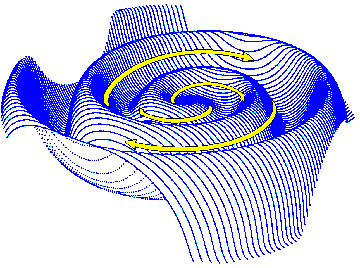© ROOT-NATION.com - Use of content is permitted with a backlink.
A massive sunspot on the Sun’s surface left us with one more parting gift before finally turning around and disappearing from our vantage point on Earth.
The sunspot, designated AR3664, has been cracking with solar flares for several days. On May 10, an X5.8 class flare was recorded here, and yesterday three X class flares occurred here at once – X1.7, X1.3 and a colossal X8.7. The latter is currently the largest solar flare recorded during the current 11-year solar cycle.

“Region 3664 caused ANOTHER X-ray flare as it exited the western solar limb!!! This time it was an X8.8 flare, the largest in this solar cycle!” NOAA’s Space Weather Prediction Center reported and then clarified that the flare magnitude was still X8.7.
Solar flares are intense bursts of electromagnetic radiation that “emerge” from sunspots on the surface of the Sun. They are classified into letter groups according to their size, with X-class flares being the most powerful. Within each of these classes, numbers from 1 to 10 (and beyond for Class X flashes) indicate relative power. So you can understand that the X8.7 class is a very powerful flash.
CORRECTION to previous post:
Flare magnitude 8.7, not 8.8. pic.twitter.com/NSdmhTWIYH— NOAA Space Weather Prediction Center (@NWSSWPC) May 14, 2024
But don’t rush to grab your cameras and wait for the night to come. Despite the terrifying size of the flare, those hoping for a repeat of widespread auroras and pink skies may be disappointed, as this flare is not expected to cause the northern lights to appear much further south than usual. “Due to its location, any emission associated with the flare will likely have NO geomagnetic effect on Earth,” NOAA’s Space Weather Prediction Center said in an updated statement.
However, as always with strong flares, there is the possibility of radio interference. Due to the location of AR3664, there is a connection between this region of the Sun and the Earth, which causes a prolonged radio blackout.
When a sunspot is above the western edge, or limb, of the Sun, it falls into a place that “connects” it to the Earth. Charged particles from AR3664 are carried through space in a Parker spiral, and when they enter the Earth’s magnetic field, the protons spin up and head for the poles, where they interact with our atmosphere and begin to interfere with the transmission of short-wave radio signals.

The Sun has not erupted with flares stronger than X8.7 since September 2017. At that time, scientists recorded X11.8 and X13.3 level outbreaks with an interval of several days from each other.
Read also:
- NASA scientists are preparing to study the impact of solar storms on Mars
- Rocket Lab has launched a state-of-the-art solar sail spacecraft into space


